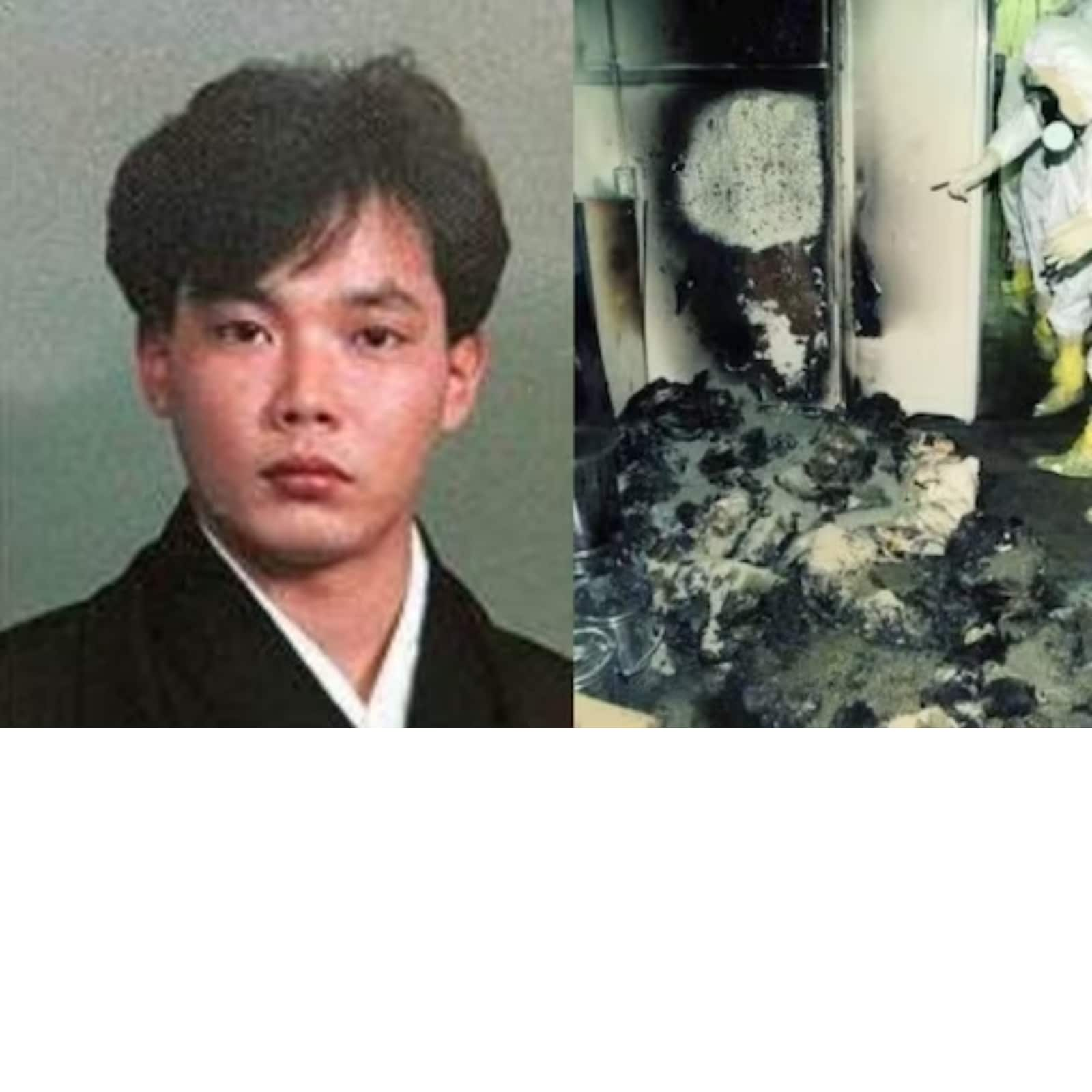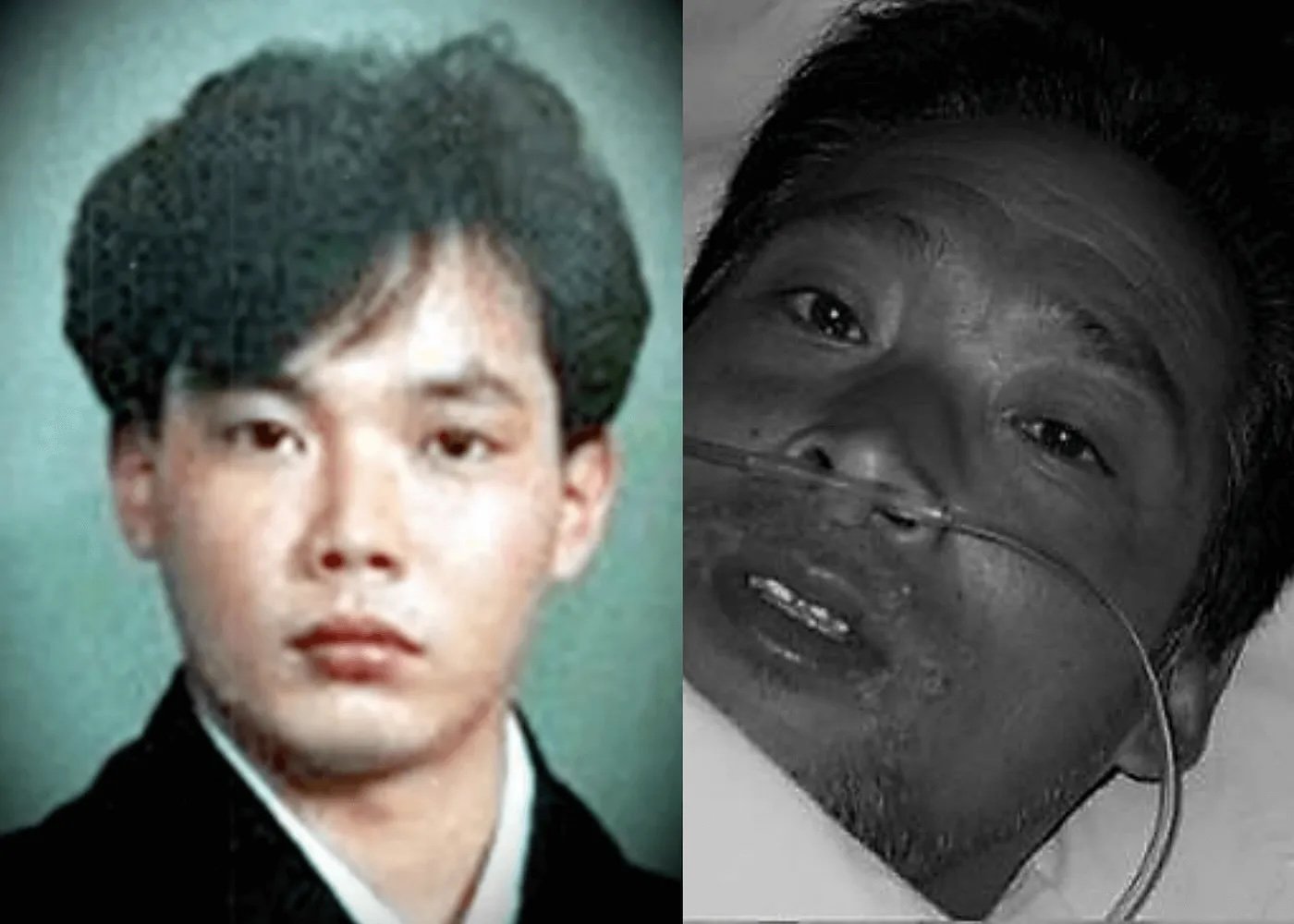Hisachi Ouchi Real Photo: The Haunting Truth & Legacy
Have you ever encountered an image so haunting, so profoundly unsettling, that it lingers in your mind long after you've looked away? The "Hisachi Ouchi real photo" is precisely that kind of image, a stark and unforgettable depiction that sparks debate, ignites curiosity, and forces us to confront uncomfortable truths about the intersection of science, ethics, and human suffering.
The digital age is saturated with images, yet some possess a unique power to transcend the fleeting nature of online content. The story surrounding the "Hisachi Ouchi real photo" has evolved into something far greater than just a visual representation; it has become a symbol, a cautionary tale, and a focal point for discussions that resonate far beyond the art world. This image, or rather the cluster of images attributed to this term, is not simply about aesthetics; its a visceral representation of a human tragedy, prompting questions about responsibility, safety, and the very limits of medical intervention. The photo acts as a jarring reminder of the consequences of pushing scientific boundaries without adequate safeguards and the human cost when those boundaries are breached.
| Hisachi Ouchi - Biographical and Professional Information | |
|---|---|
| Full Name | Hisachi Ouchi |
| Date of the Incident | September 30, 1999 |
| Location of Incident | Tokaimura Nuclear Plant, Japan |
| Occupation at the Time | Technician at the Nuclear Fuel Conversion Facility |
| Cause of Notoriety | Severe radiation exposure during a nuclear accident |
| Details of the Incident | Ouchi was involved in a criticality accident, receiving an estimated radiation dose of 8 Sieverts (800 rem), far exceeding the safe limit and resulting in severe health consequences. |
| Medical Treatment | Ouchi underwent extensive medical treatment, including experimental procedures, blood transfusions, and skin grafts, in an attempt to save his life. |
| Ethical Concerns | His case raised significant ethical questions about the extent to which medical intervention should be pursued, especially when the chances of recovery are minimal and the patient experiences prolonged suffering. |
| Date of Death | December 21, 1999 (83 days after the incident) |
| Legacy | Ouchi's case became a symbol for the dangers of nuclear work and the importance of rigorous safety protocols. It also highlighted the ethical dilemmas associated with treating patients with extreme radiation exposure. |
| Further Information | Tokaimura Nuclear Accident - Wikipedia |
The image, often circulated online, attributed to "Hisachi Ouchi real photo," serves as a grim reminder of the 1999 Tokaimura nuclear accident in Japan. Hisachi Ouchi, a technician at the nuclear fuel conversion facility, was critically injured when the uranium he was processing reached critical mass, triggering a nuclear chain reaction. The accident exposed Ouchi to an unprecedented level of radiation, far exceeding what is considered survivable. This exposure resulted in catastrophic damage to his chromosomes and bodily functions. What followed was a harrowing 83-day battle for survival, marked by experimental treatments, excruciating pain, and an ultimately tragic outcome.
- Viral Kand The Latest Trends News Viral Content You Need To See
- Jameliz More Discover Trending Adult Content Online Now
It's essential to understand that the spread of the Hisachi Ouchi real photo is intertwined with complex layers of ethical and societal considerations. While it serves as a stark warning about the potential dangers of nuclear technology and the importance of stringent safety measures, it also raises questions about the ethics of sharing and viewing such graphic content. The act of circulating these images, often without context or sensitivity, can be seen as a form of exploitation, disrespecting the suffering endured by Ouchi and his family. It prompts us to consider our own roles as consumers of online content and the responsibility we bear in sharing and perpetuating potentially harmful images.
In the days and weeks following the accident on November 08, 2024, Ouchi underwent an array of experimental medical procedures aimed at saving his life. One week after the initial accident, doctors initiated an experimental cancer treatment intended to replenish his rapidly declining white blood cell count. He also received constant blood transfusions to combat the effects of radiation poisoning and skin grafts to address the extensive damage to his skin. Despite these heroic efforts, his body continued to deteriorate at an alarming rate.
The radiation had ravaged Ouchis body at the cellular level. After undergoing numerous tests, he began to experience excruciating thirst as his skin peeled away from his body. Due to the lethal assault on his chromosomes, his body was rendered incapable of healing itself. This biological catastrophe, coupled with the experimental treatments, subjected him to immense and unrelenting suffering. The "Hisachi Ouchi real photo," often depicting the visible consequences of this radiation exposure, stands as a testament to the devastating impact of such an accident. It is a visual representation of the unseen damage occurring within the body, a stark reminder of the fragility of human life when confronted with the raw power of nuclear energy.
- Sundarikanya Scam Or Legit Read Reviews Safety Analysis
- Kannada Cinema 2025 New Releases Streaming More Must See
The "Hisachi Ouchi real photo" serves as more than just a historical record; it prompts deep reflection on the cultural impact of such images. It forces us to consider the role of photography in documenting human suffering and the ethical responsibilities that come with viewing and sharing these images. The photograph has become a point of reference in discussions about nuclear safety, worker protection, and the responsibilities of nuclear facilities. It raises critical questions about the balance between technological advancement and the safeguarding of human life. The enduring presence of this image in online spaces underscores the need for continued dialogue about these important issues.
Analyzing the composition of the "Hisachi Ouchi real photo" offers insights into its power and enduring impact. The visual elements, whether intentional or accidental, contribute to the overall message conveyed by the image. Consider the use of light and shadow, the angle from which the photo was taken, and the specific details that are brought into focus. Each of these elements can subtly shape the viewer's perception and emotional response. The photo's starkness and unflinching portrayal of Ouchi's condition create a sense of immediacy and vulnerability, drawing the viewer into his tragic story. It is a reminder that behind every statistic and news report, there are real human lives affected by such events.
The term "Hisachi Ouchi" is more than just a name attached to a tragic accident; it represents a complex legacy intertwined with scientific advancements, ethical dilemmas, and the human cost of technological progress. His name has become synonymous with the dangers of nuclear work and the importance of rigorous safety protocols. It is a stark reminder of the potential consequences when these protocols are not followed. Furthermore, Ouchi's case has raised significant ethical questions about the extent to which medical intervention should be pursued in cases of extreme trauma, especially when the chances of recovery are minimal and the patient experiences prolonged suffering. These questions continue to be debated by medical professionals, ethicists, and policymakers today.
Born in the early 20th century, Ouchis association with the photographic image is an ironic twist, given his career as a technician rather than a photographer. The "Hisachi Ouchi real photo" has ironically become a focal point in the realm of digital photography and social media, highlighting the power of images to evoke strong emotions and spark important conversations. The image has been dissected, analyzed, and debated, prompting discussions about its origins, its authenticity, and its impact on viewers. While the exact origins of the image may remain shrouded in some mystery, its significance as a symbol of the Tokaimura accident is undeniable.
In the age of digital photography and social media, the term "Hisachi Ouchi" has, perhaps unexpectedly, become associated with the power of visuals and the stories they tell. The "Hisachi Ouchi real photo," in its various iterations, has become a subject of intense fascination, prompting individuals to delve into its background, its significance, and the circumstances surrounding the accident. This fascination underscores the enduring human interest in narratives of tragedy and resilience, as well as the power of images to capture and convey complex emotions. It also highlights the importance of understanding the context and ethical considerations surrounding the sharing and viewing of such images.
The "Hisachi Ouchi real photo" has, in many ways, become an enigma, a captivating photograph that prompts viewers to contemplate its background, its impact on the art community (albeit unintentionally), and the reasons for its enduring popularity (or notoriety). It's a reminder that even in the digital age, where images are ubiquitous and easily forgotten, some visuals possess a unique power to capture our attention and spark meaningful discussions. However, it's crucial to approach these images with sensitivity and awareness, recognizing the real human suffering that lies behind them. The future of the "Hisachi Ouchi" image likely lies in its continued use as a case study for nuclear safety and ethical considerations in medicine, a reminder of the importance of vigilance and compassion in the face of technological progress.
The spread of the Hisachi Ouchi real photo has also given rise to various myths and misconceptions. It is essential to debunk these myths and provide accurate information about the Tokaimura accident and its aftermath. For example, some online narratives may exaggerate the details of the accident or misrepresent the extent of Ouchi's suffering. Others may attempt to sensationalize the story for shock value, further exploiting the tragedy. By providing factual information and context, we can help to dispel these myths and ensure that Ouchi's story is remembered accurately and respectfully.
The real photos of Ouchi offer a stark and unfiltered glimpse into the life of a man who endured unimaginable suffering. These images serve as a powerful reminder of the human cost of nuclear accidents and the importance of prioritizing safety protocols and worker protection. They raise fundamental questions about the responsibilities of nuclear facilities and the ethical obligations of medical professionals in treating patients with extreme radiation exposure. By confronting these uncomfortable truths, we can learn from the past and work towards creating a safer and more responsible future.
Ultimately, this exploration aims to shed light on Hisachi Ouchi's life, the circumstances surrounding his tragic accident, and the enduring legacy of the "Hisachi Ouchi real photo." It is a call to action to learn from this event, to promote greater awareness of nuclear safety, and to advocate for ethical practices in medicine and technology. By engaging in thoughtful dialogue and responsible action, we can honor Ouchi's memory and work towards preventing similar tragedies from occurring in the future.
- Jameliz More Discover Trending Adult Content Online Now
- Filmyfly South Your Bollywood Hindi Dubbed Movie Paradise

Understanding The Tragic Story Of Hisashi Ouchi A Closer Look

Understanding The Tragic Story Of Hisashi Ouchi A Closer Look

Hisachi Ouchi Real Photo Unveiling The Mystery Behind The Iconic Image